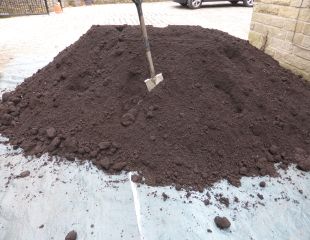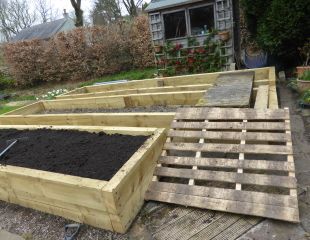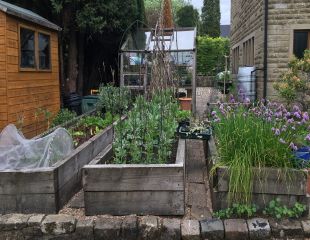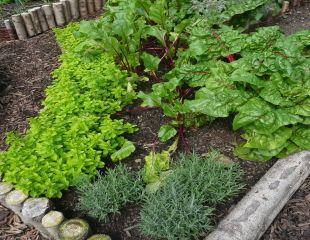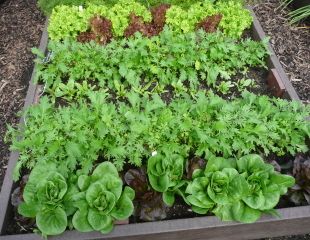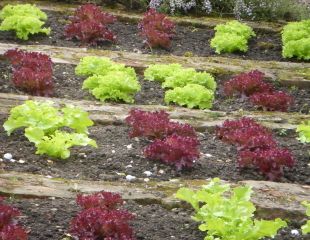A beginners guide to growing vegetables
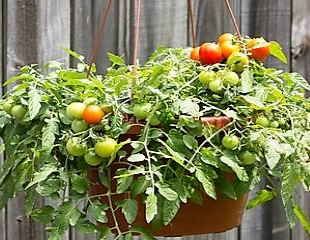
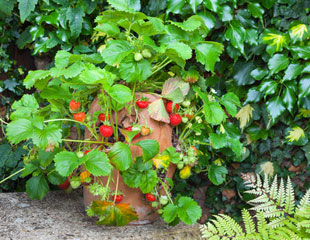
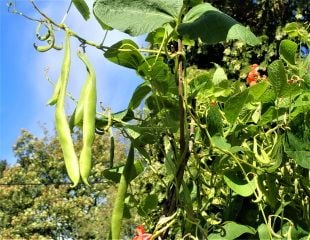
How to start growing vegetables
As the cost of living crisis continues more of us are looking to grow our own vegetables, and you do not need to have a garden to grow a tasty crop. Vegetables are versatile and you can grow some veg and herbs on windowsills, most veggies in containers on a patio, balcony or back yard, and all veg in a dedicated veg plot. What they need most is sun and attention.
Below is information to you get started wherever you intend to grow your vegetables. Go to the "grow your own"tab above or use the search function to get more information about growing different veg. You may also find useful, 10 easy veg to grow for beginners, vegetable growing tips and crop rotation,
Where to start?
Growing vegetables without a garden
If you don't have any garden, you are reliant on windowsills to grow herbs and vegetables.
Absolutely ideal for indoor windowsills are all the herbs, such as parsley, chives, thyme, rosemary and chillies. You can even use supermarket herb plants but always re pot them as the compost is often poor. Another tip is to divide herb plants into 2/3/4, depending on its size, report and then grow on. This way you have several plants for the price of one. Chillies do well inside and will produce a good crop, (and freeze well.)
You can grow tomatoes inside providing you can tolerate a bit of mess but note that most conservatories will get too hot. Although tomatoes like it warm, they may dry out more and wilt in high temperatures above around 27C.
Lettuces and rocket are also an ideal windowsill crop, but do not place in full all day sun as Lettuce prefers cooler temperature.
Ideally select at small veg, radish, spring onions, pea shoots, cress and any miniature varieties.
Growing vegetables on the patio and in a backyard.
If you have a patio or backyard, you can grow a great range of vegetables. Virtually all vegetables will grow well in containers. What you can grow depends on how much room you have.
Larger vegetables such as potatoes, peas, beans, runner beans, onions all require a good sized container, whereas the smaller vegetables, i.e. strawberries, tomatoes, garlic, salad crops will be content in smaller containers.
Points to think about are: the growing medium, watering and varieties.
Given that the veg is growing in a container, it needs a good quality compost to keep it growing and cropping well. The only exception is carrots which do not do well on very rich/manured compost.
All crops in containers will dry out more quickly, which means they will need to be checked and watered more regularly. Most veg need good sun, at least 6 hours per day to do well, although some vegetables notably lettuces, and some common herbs such as parsley, chives and coriander will grow in light shade, check out Herbs for Shade.
Container grown vegetables will do best in larger containers at least 25cms and more, the bigger the better. It is tempting to plant close because of the restricted space, but too close and you will get a reduced crop, poor air circulation and invite pests and diseases to dine on your veg. Give them space.
Think also about the variety of seeds you intend to grow. For example, Kale can be a very large plant, we see some big leaves on sale in the supermarkets but there are dwarf varieties, such as 'dwarf green curled' which will do well in a container, especially if the leaves are picked young. Many commonly grown vegetables have smaller varieties for sale. Cherry styled tomatoes are great in containers, including hanging baskets as are the small snack sized cucumbers. New potatoes take up less space than main crop. There are lots of varieties of baby veg to choose from. There is a nice selection of small veg on sale at Crocus- affiliate link.
Ideas and growing tips on 10 best vegetables to grow in containers.
Growing strawberries in a hanging basket
One of the most popular crops to grow in containers and hanging baskets are strawberries. Its really easy to get a good tasty crop and you can grow several varieties to crop across the summer
Growing tips and also check the short video about growing strawberries in hanging baskets.
Making a veg plot
You can make a vegetable plot anywhere in your garden, as long as it has plenty of sun and good soil. You do not need to make a special veg plot, although it can be easier to maintain in bordered or raised beds. Raised borders have better drainage, higher soil temperature and it is easier to keep adding compost and organic matter to improve the soil. Plus, they look smart.
Create your borders so they get as much sun as possible, and construct in a sheltered spot.
Below are some images of creating a vegetable plot. When working out the costs bear in mind, the volume of compost needed to fill the borders. You can also buy ready made kits such as sold by Crocus check the afflilate link. These are an easy way to create veg borders and suitable for patios and small spaces.
Bear in mind you can construct a veg plot out of anything you have to hand provided the wood, or the material is clean, no chemicals or paints and there is good drainage.
Last updated 11.01.2023
